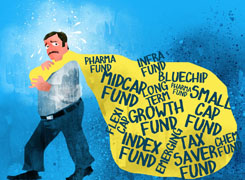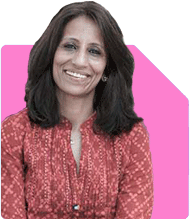Sir,
I wish to invest in following MF
1. Tata or UTI nifty 50 index fund . G
2. HDFC focused 30 G
3. Mahindra Manulife multicap Or Nippon multicap..G
4. Motilal Oswal mid cap.
Each will have 2.5 L investment Amt.
Kindly advise
Thanks..
Ans: You are considering investing Rs 2.5 lakh in four different mutual funds. This includes a mix of index funds, focused funds, multi-cap funds, and mid-cap funds. I appreciate your thoughtful selection, but it’s essential to evaluate the pros and cons before proceeding.
In this analysis, I will give you a professional yet simple overview of each type of fund. Let's ensure that your choices align with your financial goals.
1. Index Funds: Pros and Cons
You’ve mentioned the Tata or UTI Nifty 50 Index Fund. Index funds, as you know, passively track an index like the Nifty 50. While this may seem like a safe option, there are some points you need to consider:
Advantages:
Low-cost option.
Simple to understand and follow as it mirrors the index.
Decent long-term growth potential.
Disadvantages:
Lack of flexibility: Index funds follow the market. If the index doesn’t perform well, neither will your investment. This limits returns compared to actively managed funds.
No risk management: Index funds cannot switch away from underperforming sectors.
Miss out on opportunities: Actively managed funds can offer superior returns by taking advantage of market opportunities.
Since actively managed funds offer better flexibility and potential for higher returns, I would recommend focusing on actively managed funds instead of index funds.
2. Focused Funds: A Balanced Approach
You’re considering investing in HDFC Focused 30 Fund. Focused funds invest in a limited number of stocks, typically around 20-30. This allows fund managers to focus on high-conviction ideas.
Advantages:
Potential for high returns: With a limited portfolio, focused funds can give significant returns if the chosen stocks perform well.
Concentration of best ideas: Fund managers can pick the top-performing companies.
Disadvantages:
Higher risk: Because the portfolio is concentrated, if a few stocks perform poorly, it can significantly impact returns.
Volatility: These funds can experience higher fluctuations due to limited diversification.
Focused funds are ideal if you’re willing to take moderate risk. They balance high returns with some risk. Since your portfolio includes emergency funds and insurance, this could be a reasonable choice.
3. Multi-Cap Funds: Balanced Exposure to Large, Mid, and Small Caps
You mentioned either the Mahindra Manulife Multicap or Nippon Multicap Fund. Multicap funds offer exposure across large-cap, mid-cap, and small-cap stocks, providing diversification.
Advantages:
Diversification: These funds reduce risk by investing across the spectrum of large, mid, and small-cap stocks.
Flexibility: Fund managers can shift allocations based on market conditions.
Disadvantages:
Risk in small and mid-cap: Although these funds invest in large caps, the exposure to mid and small caps adds an element of risk.
Performance varies: Depending on market conditions, these funds can underperform if small or mid-caps don’t do well.
Multi-cap funds are an excellent choice for a balanced approach. They give you exposure to all segments of the market, allowing you to benefit from growth in different sectors. However, there’s moderate risk involved.
4. Mid-Cap Funds: High Growth, High Risk
Finally, you’ve considered investing in Motilal Oswal Mid Cap Fund. Mid-cap funds focus on mid-sized companies, which are often in the growth stage.
Advantages:
High growth potential: Mid-caps have higher growth potential compared to large caps.
Diversification across industries: Mid-cap companies come from diverse sectors, providing broader market exposure.
Disadvantages:
Higher volatility: Mid-cap stocks are more volatile than large caps. They can offer high returns but may experience significant fluctuations.
Market dependency: Mid-caps tend to underperform during market downturns, which increases risk.
Mid-cap funds are suitable if you are looking for long-term growth and are comfortable with higher risk. Since your portfolio includes a good mix of other funds, this could be a good growth-oriented addition.
Evaluating Your Overall Portfolio
Balanced diversification: Your portfolio contains a combination of mid-cap, multi-cap, and focused funds. This creates a balanced exposure across different market segments.
Risk assessment: The inclusion of mid-cap and focused funds indicates that you’re willing to take moderate to higher risks. However, avoid over-exposure to mid-caps, as they can be volatile in the short term.
Long-term growth potential: Each fund type offers strong long-term potential, especially with the exposure to mid and multi-cap segments. You’re positioned well for growth over the next 10-15 years.
Recommendations for Improvement
Here are a few suggestions to optimise your portfolio further:
Avoid over-reliance on index funds: As mentioned earlier, actively managed funds may offer better returns. You may want to replace the index fund with a large-cap fund managed by an experienced fund manager.
Review portfolio regularly: It’s essential to review and rebalance your portfolio regularly. This ensures your investments remain aligned with your goals and market conditions.
Consider goal-specific investments: While your portfolio appears diversified, it’s essential to allocate funds specifically for long-term goals like retirement or your child’s education. Make sure your investments match your risk tolerance and time horizon.
Tax Efficiency and Growth
Another critical factor is the tax efficiency of your investments. Mutual funds, especially equity-oriented ones, are tax-efficient compared to fixed deposits and other bank-based savings instruments. The long-term capital gains on equity mutual funds are taxed at 12.5% beyond Rs 1.25 lakh of gains, making them a better option for long-term wealth creation.
By investing Rs 2.5 lakh in each fund, you’re making a decent start. However, don’t forget to review tax implications annually to minimise liabilities and maximise growth.
Final Insights
In summary, your portfolio looks strong with a mix of equity funds targeting growth. However, I suggest replacing the index fund with an actively managed large-cap fund to optimise returns. Continue monitoring your investments regularly and ensure your asset allocation is aligned with your financial goals. With proper planning and regular reviews, your portfolio can help you achieve long-term financial success.
Best Regards,
K. Ramalingam, MBA, CFP,
Chief Financial Planner,
www.holisticinvestment.in




























